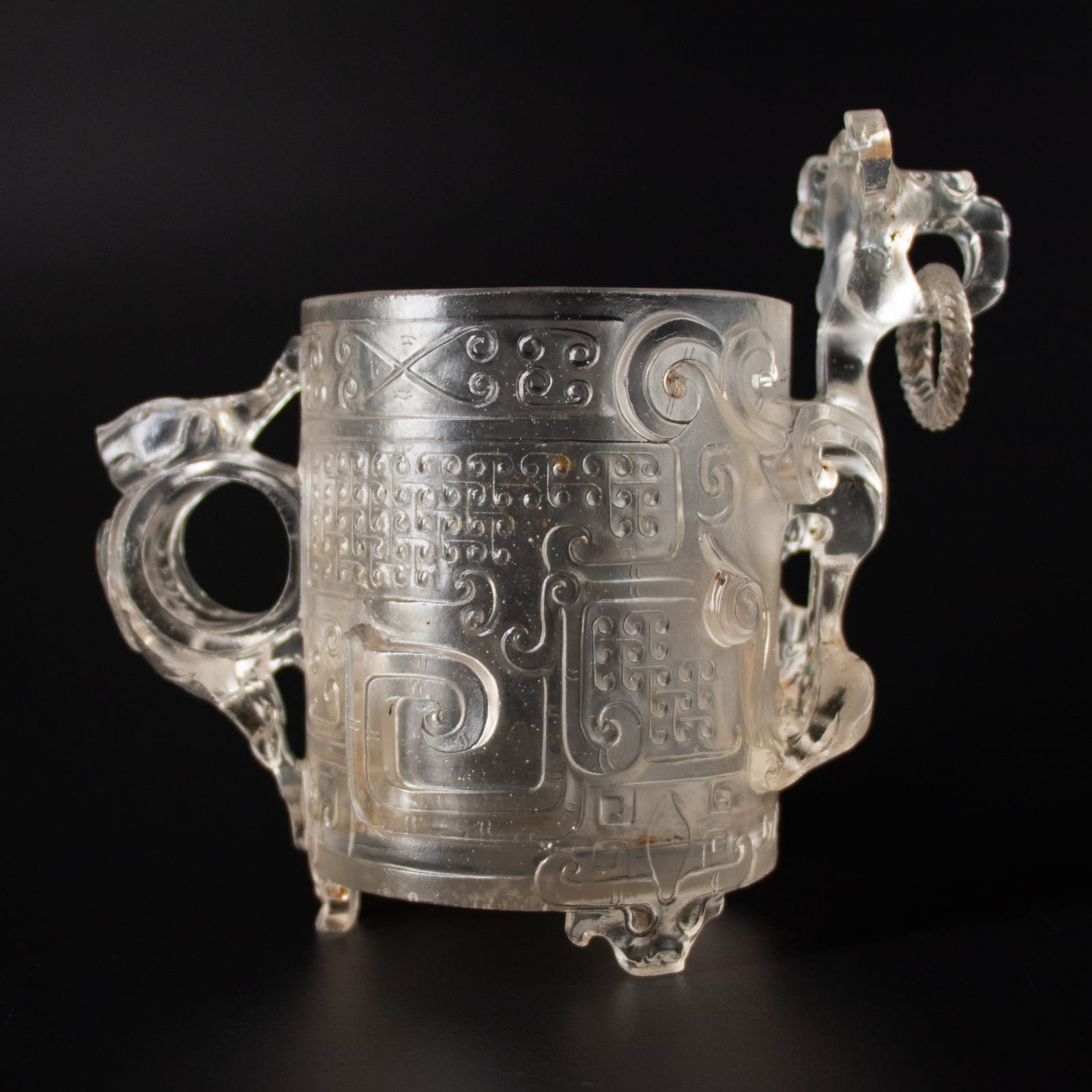Glass goblet with dragon-shaped handle, Qing Dynasty, 1644-1912
Glass
Height: 10 cm
Diameter: 7.5 cm
Diameter: 7.5 cm
ES.9990
A splendid clear cast glass goblet of a cylindrical form, decorated with two handles in the shape of a dragon and a lion, the former presenting a suspended ring. All...
A splendid clear cast glass goblet of a cylindrical form, decorated with two handles in the shape of a dragon and a lion, the former presenting a suspended ring. All the surface if finely embellished by geometrical motifs in low relief. The decorative details are incredibly defined and give the goblet a naturalistic touch.
In the Qing dynasty (1644-1912) glassmaking witnessed a big revival, probably a result of the imperial support, as many ateliers which were working specifically for the palace were established. The creation of these imperial workshops and their openness towards the introduction of western techniques, lead to the flourishing of Chinese glassmaking. Qing glass production was marked by enthusiastic support from the emperor, princes, and high officials and glass objects like the ones presented here were luxury articles. In the Kangxi period (1661-1722, the third emperor of the Qing dynasty) glass imitation of gems reached its peak, with clear glass used in place of rock crystal. Rock crystal was a material treasured by the Chinese people in the same way as they treasured jade and was a symbol of purity.
In the Qing dynasty (1644-1912) glassmaking witnessed a big revival, probably a result of the imperial support, as many ateliers which were working specifically for the palace were established. The creation of these imperial workshops and their openness towards the introduction of western techniques, lead to the flourishing of Chinese glassmaking. Qing glass production was marked by enthusiastic support from the emperor, princes, and high officials and glass objects like the ones presented here were luxury articles. In the Kangxi period (1661-1722, the third emperor of the Qing dynasty) glass imitation of gems reached its peak, with clear glass used in place of rock crystal. Rock crystal was a material treasured by the Chinese people in the same way as they treasured jade and was a symbol of purity.
